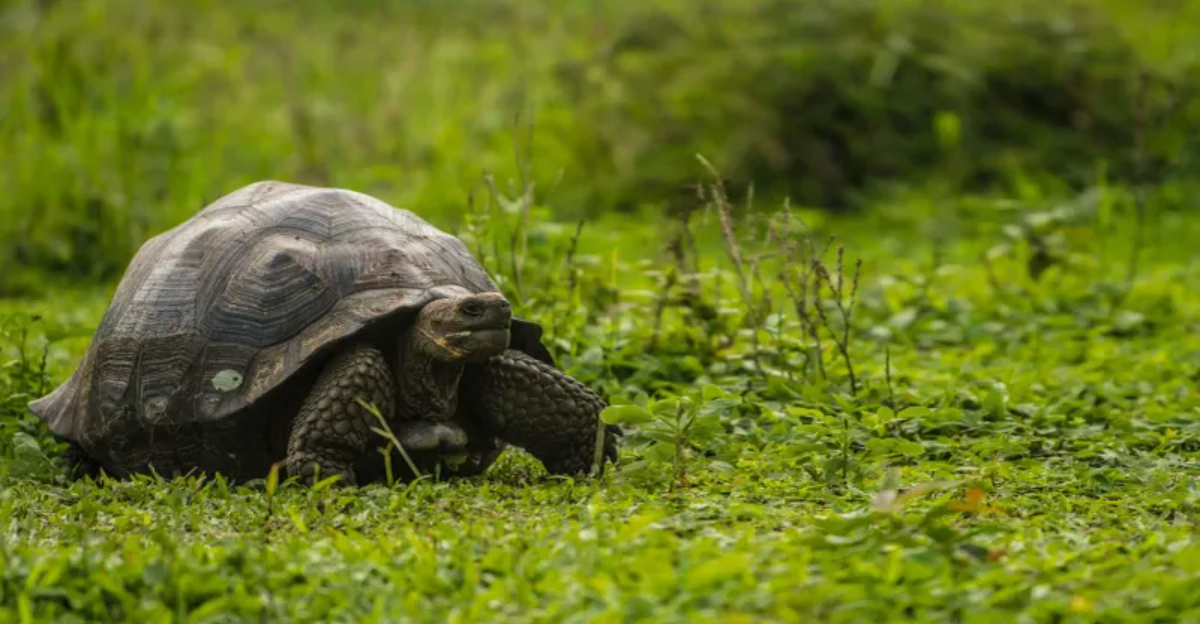Explore the fascinating world of animals that defy time with their extraordinary lifespans. From the depths of the ocean to the skies above, these creatures have mastered the art of longevity, living for centuries.
Dive into the lives of these long-lasting beings and discover the secrets behind their impressive ages. Maybe we can learn a thing or two, am I right?
1. Bowhead Whale
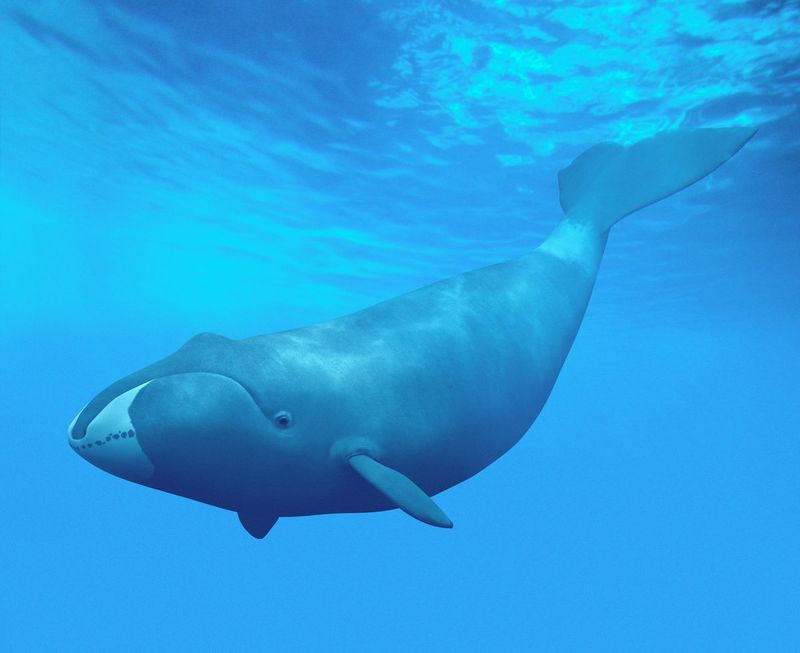
The bowhead whale is a majestic creature that calls the icy Arctic waters home. Known for its massive size and distinctive bow-shaped head, this whale can live for over 200 years, making it one of the longest-living mammal species.
Scientists attribute its longevity to its slow metabolism, thick blubber, and the cold environment it thrives in, which reduces stress and wear on its body.
The bowhead whale’s impressive age is not just a result of its physical attributes. Its ability to repair DNA and resist age-related diseases also plays a crucial role.
This resilience has sparked interest among researchers who study its biology to uncover secrets that might benefit human health. The whale’s social behavior, often seen in groups, also adds to its survival, as they protect each other from predators.
2. Galápagos Tortoise
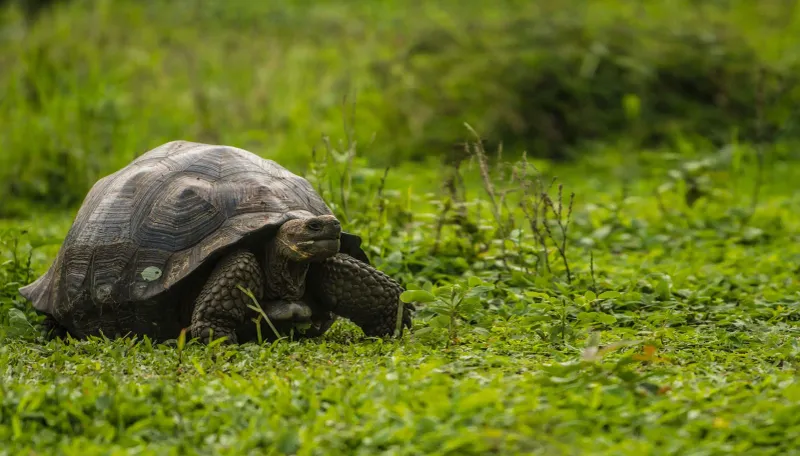
These gentle giants are native to the Galápagos Islands and are known for their slow-paced lifestyle, which contributes to their extended lifespan.
Their diet of leafy greens and fruits, along with minimal stress from predators, aids in their long life.
The tortoises’ social structure and mating rituals play a role in their longevity. Living in groups, they support each other and share resources, ensuring survival.
Their ability to store large amounts of water and slow metabolism helps them endure harsh conditions, including droughts.
The Galápagos tortoise’s long life has made it a symbol of endurance and adaptation. Visitors to the islands are often captivated by these creatures, witnessing firsthand the legacy of evolution.
3. Greenland Shark
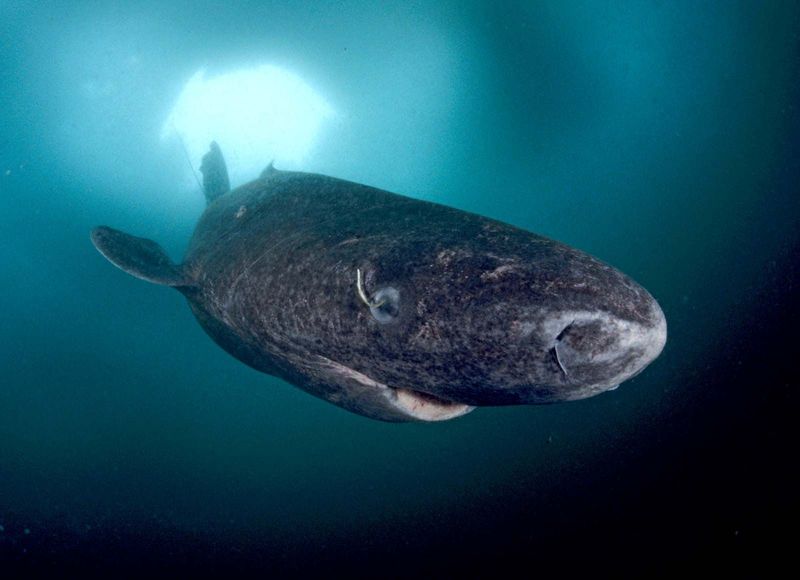
The Greenland shark is an elusive giant of the Arctic and North Atlantic oceans, often living for 300 to 500 years.
This remarkable longevity is attributed to its slow growth rate and the frigid waters it inhabits, which slow down its metabolism. Despite its size, it is a gentle creature that feeds on a variety of marine life.
This shark’s long life is also a result of its unique physiology. Its tissues contain compounds that resist aging and repair damage, allowing it to thrive in harsh environments. The Greenland shark’s ability to adapt to different depths and temperatures further ensures its survival in the icy depths.
The mystery surrounding the Greenland shark’s life has intrigued scientists for years. Studying these ancient creatures provides insights into the biology of aging and adaptation.
4. Rougheye Rockfish
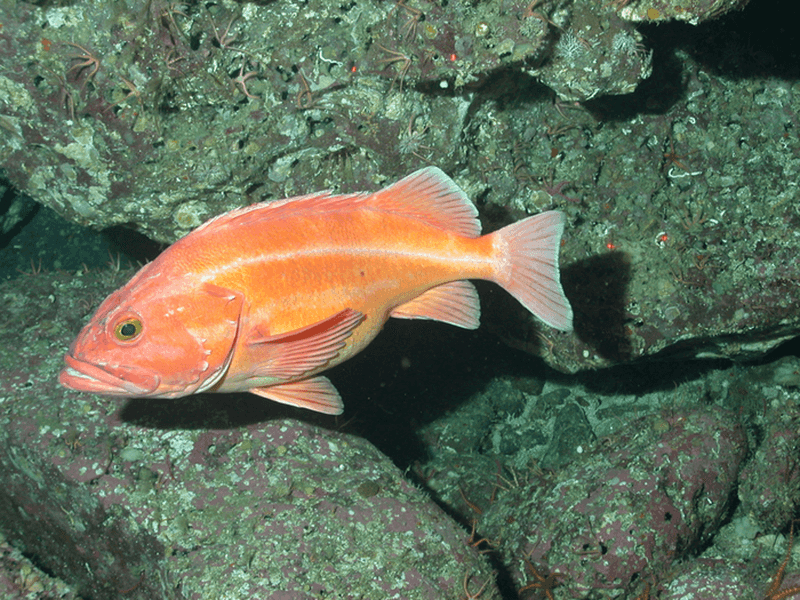
This fish is a vibrant inhabitant of the Pacific Ocean, known for its striking appearance and impressive lifespan of over 200 years.
These fish reside in deep, rocky habitats, where their slow growth rate and stable environment contribute to their longevity. Their diet of small fish and invertebrates provides the necessary nutrients for a long life.
The rockfish’s ability to live for centuries is linked to its physiological adaptations. Its slow metabolism and efficient energy use allow it to thrive in deep waters with limited resources.
The rockfish’s spiny fins and camouflaged scales protect it from predators, adding to its survival skills.
5. Koi Fish
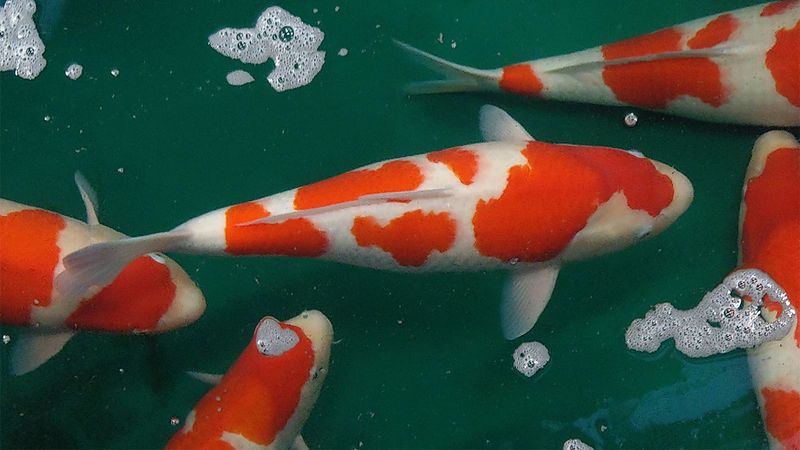
Although Koi fish are known to live 25-30 years, there have been reports of some fish that lived for 200 years. Can you imagine that?
Originating from Japan, these ornamental fish thrive in calm, well-maintained ponds. Their longevity is often attributed to proper care, a balanced diet, and a stress-free environment.
The koi’s beauty is matched by its resilience. They are hardy creatures that can adapt to different water temperatures and conditions.
Regular health checks and pond maintenance are crucial to ensuring their long life. Koi owners often create serene habitats with clean water and plenty of space for these fish to flourish.
6. Aldabra Giant Tortoise
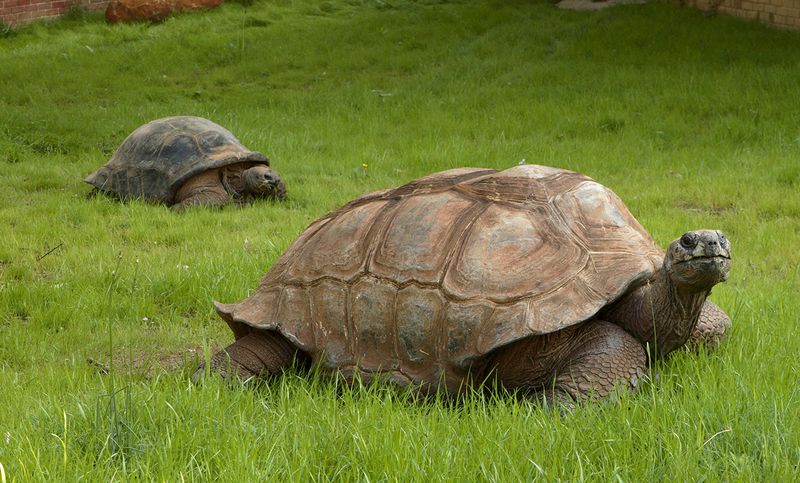
The Aldabra giant tortoise is a marvel of longevity, with some individuals living over 150 years. Native to the Aldabra Atoll in the Seychelles, these tortoises have adapted to island life with a diet of grasses and leaves. Their slow metabolism and leisurely lifestyle contribute to their incredible lifespan.
The tortoise’s massive, domed shell offers protection from predators, while its long neck allows it to reach vegetation high off the ground.
These adaptations ensure its survival in the harsh island environment. Living in large groups, Aldabra tortoises exhibit social behaviors that promote mutual support and resource sharing.
7. Ocean Quahog
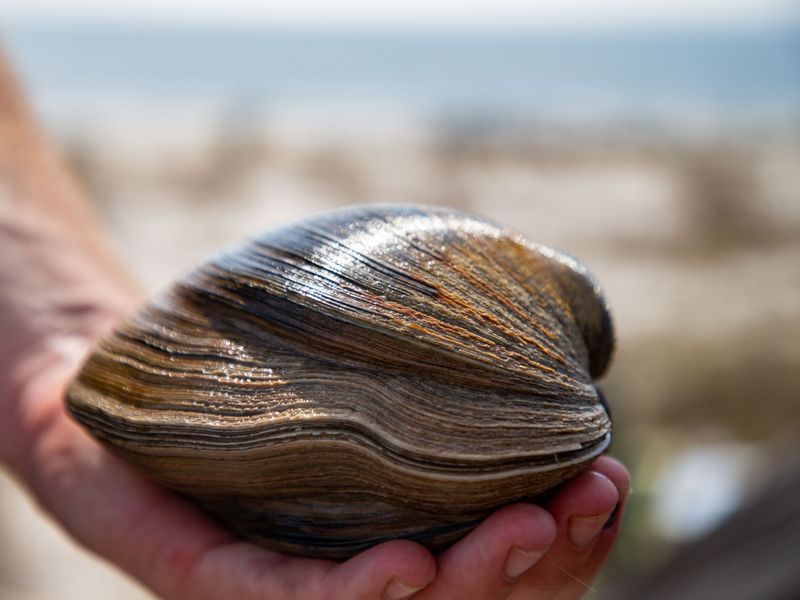
The ocean quahog is a type of clam that can live for more than 400 years, making it one of the longest-living marine animals.
Found in the North Atlantic Ocean, these clams have a robust shell that protects them from predators and environmental changes. Their slow growth rate and low metabolism are key factors in their longevity.
The quahog’s ability to survive for centuries also lies in its adaptability. It can endure varying water temperatures and salinity levels, thriving in the ocean’s challenging conditions. The clam’s tissues contain compounds that repair damage and resist aging, contributing to its impressive lifespan.
Ocean quahogs are valuable for scientific research, offering insights into the history of oceanic environments and climate change. Their long life makes them excellent recorders of environmental data, as their shells contain growth rings similar to tree rings.
8. Red Sea Urchin
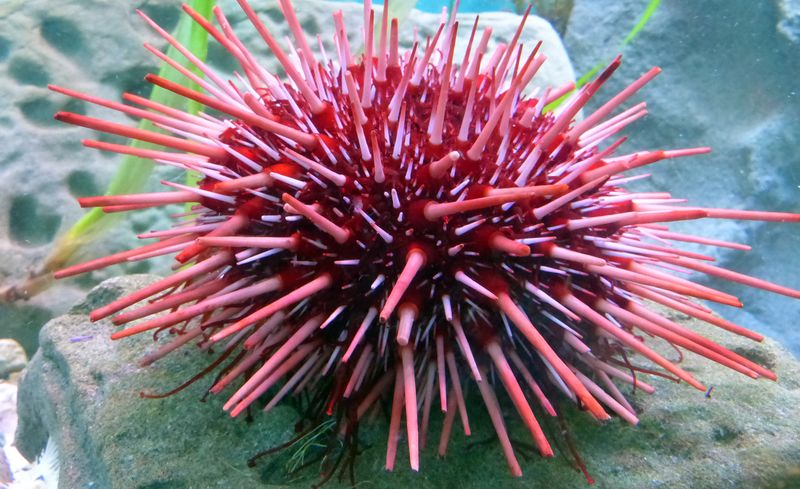
The red sea urchin is a spiky inhabitant of the Pacific Ocean, known for its striking red color and long lifespan, often exceeding 200 years.
These creatures live in rocky, subtidal zones where they feed on algae. Their slow growth and low metabolism contribute to their remarkable longevity.
The sea urchin’s hard, spiny shell provides protection from predators and harsh environmental conditions. Their ability to regenerate damaged spines and repair their tissues aids in their survival and long life. The red sea urchin’s adaptability to changing ocean conditions ensures its continued existence in the wild.
Research on red sea urchins has provided valuable insights into the aging process and regenerative medicine. Their unique biology offers clues about longevity and resilience, contributing to scientific understanding.
9. Tuatara
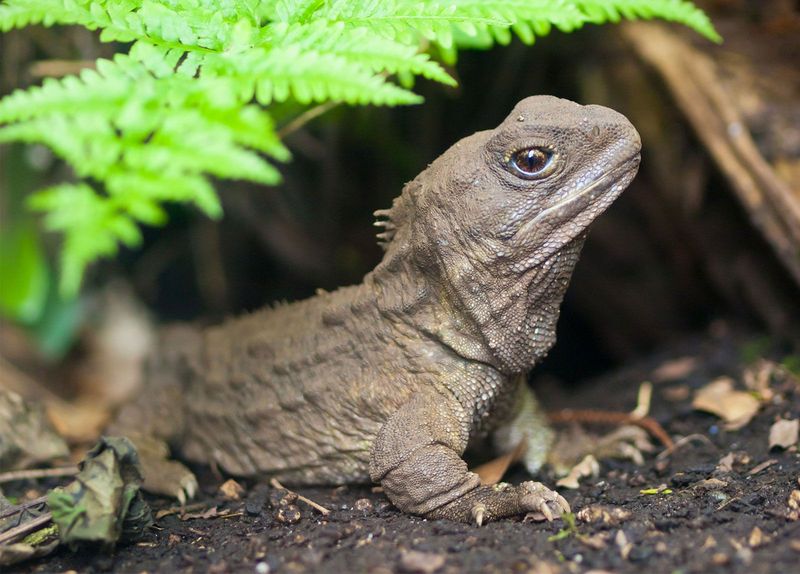
This is a unique reptile native to New Zealand, living up to 100 years or more. Often referred to as a “living fossil,” the tuatara has retained many ancient features reminiscent of its dinosaur ancestors.
Its long lifespan is attributed to its slow growth and metabolism, as well as its ability to thrive in the island’s temperate climate.
The tuatara’s distinct features, such as a third “parietal eye” on its forehead, help regulate its biological rhythms and temperature.
This adaptation, along with its nocturnal lifestyle, aids in its survival and longevity. The tuatara’s diet of insects and small vertebrates provides the necessary nutrients for its long life.
10. Macaw
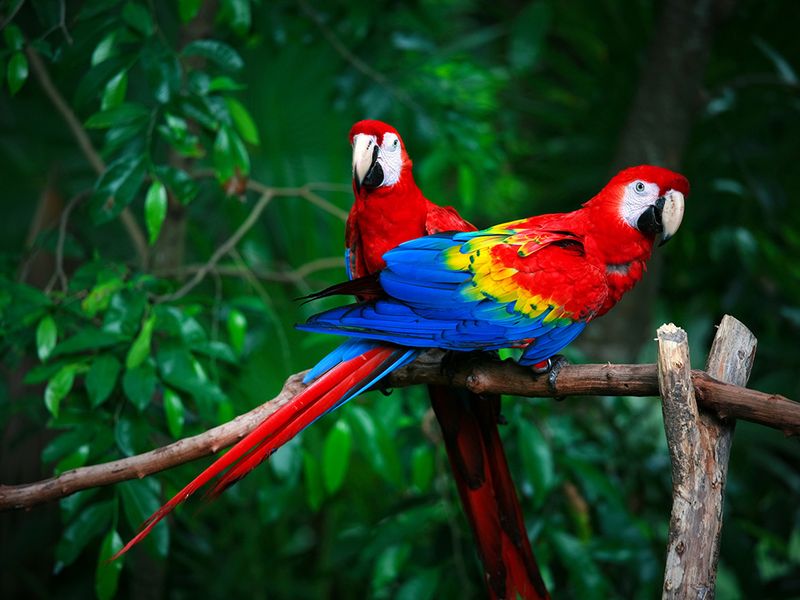
Macaws are colorful parrots known for their intelligence and long lifespan, often living up to 80 years or more in the wild. Native to Central and South American rainforests, these birds thrive in social groups, which contributes to their longevity.
Their diet of fruits, nuts, and seeds provides essential nutrients for a healthy life.
The macaw’s vibrant plumage and strong beak are not just for show; they play a crucial role in its survival. These adaptations help macaws crack open hard shells and blend into the forest canopy, avoiding predators.
Their social nature and ability to communicate through calls and gestures enhance their survival skills.

